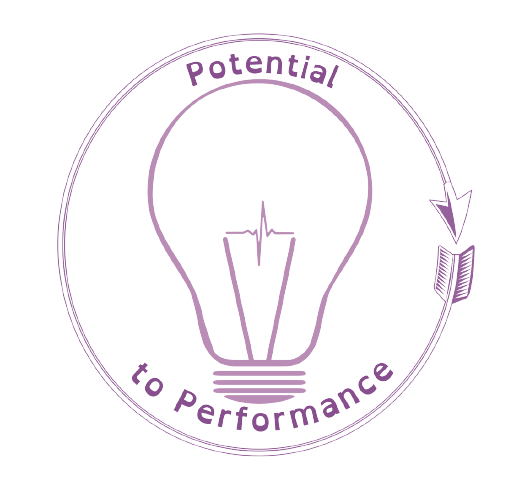By Brooke Trenwith

Humans are teleological (move towards a goal or purpose) so we biologically search for things to aim for. A goal (aka aim, intention, or desire) is what we envisage, commit to, or plan. We may not be aware of it but goals help us to find meaning in our jobs and our lives. When we struggle with mental health, goal setting is one of the pathways to support our sense of wellbeing.
For a goal to have the best chance of success it needs to have a personal element to it for the teachers that are aiming to achieve that goal. The “what’s in it for me?” element is essential if we are setting team or department goals – and not just for our millennials.
One of the biggest issues in schools is that there is a disconnect between the strategic goals of the school, the department goals, and the personal goals of the teacher (Professional Growth Cycle). This disconnect leads to any goals or actions toward a goal feeling like “extra work” or an “add on”. When we have cohesion across our goals, we are able to see the connection and it helps us make meaning in all the different steps. By outlining goal criteria, it can help us set more manageable and achievable goals. I recommend using SMART or PEERS. Now SMART has two sets of acronyms, so decide on the one that is best for your school. With PEERS, I prefer to add in an additional E for equality so that we are bringing an inclusive lens into the goal.

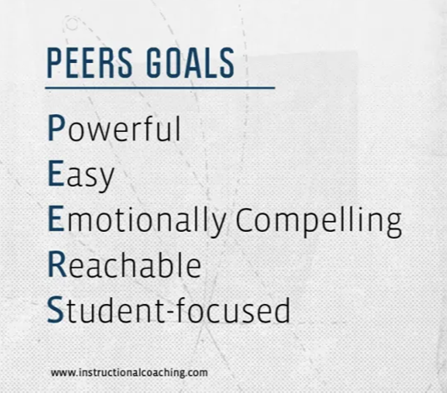
Deciding on Department/Team goals
The school’s Strategic Plan should guide department and team goal setting.
- This ensures that we are all in the same waka. The word ‘guide’ is essential – it will not be an exact goal.
- Once the Strategic goals have been set by SLT and BoT, HoFs/ Team Leaders need to discuss together how the overall school’s Strategic Goals influence their roles as leaders of learning. The HoFs/ Team Leaders set specific goals for their team.
- These HoFs/ Team Leaders goals then get taken back to their Department to reduce down to Department Goals and then individual teacher goals.
- Numbers-wise, Departments/Teams should end up with around 3-4 goals to implement over the course of a year. These are overarching goals (e.g., long-term) with smaller goals (e.g., short-term) set under them.
Effective goal-setting is characterised by creating a few specific and clear goals. However, New Zealand school leaders often set too many unspecific goals and struggle to keep a sustained focus on their goals over the course of the year (Bendikson et al., under review).

Myer, Bendikson, Le Fevre (2020). Leading effective goal setting to improve student outcomes. Teaching & Learning Institute – Nāu I Whatu Te Kākahu, He Tāniko Taku.
Example of School Goal Setting
- The Strategic Plan has four goals.
- The HoFs/Team Leaders choose two of those goals to focus on for the year and break those two goals into HoF-specific goals. The goals need to be decided on in collaboration to lead the direction of learning in the school.
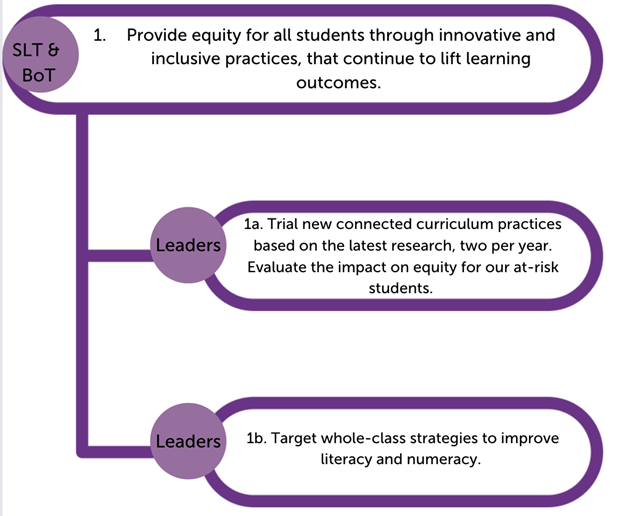
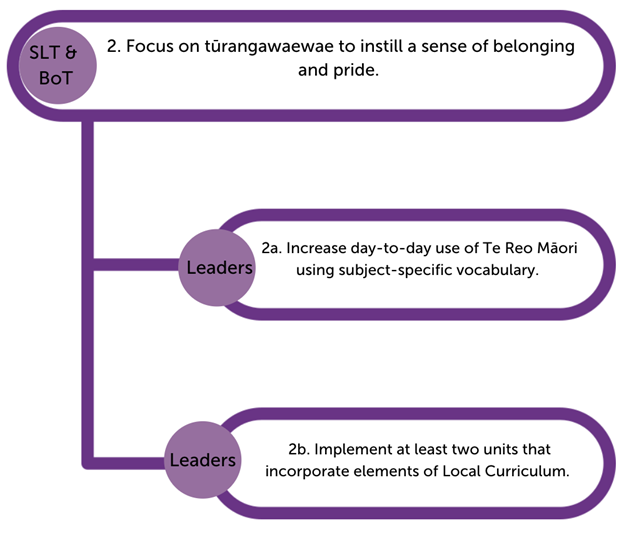
Once the HoFs/Team Leaders have broken down and agreed on the goals there will be 8 that are taken to a department level for discussion.
At the Department/Team level, they need to look at the 8 and discuss how these can happen in the department in a way that aligns with the direction the department is going.
Here is a secondary example:
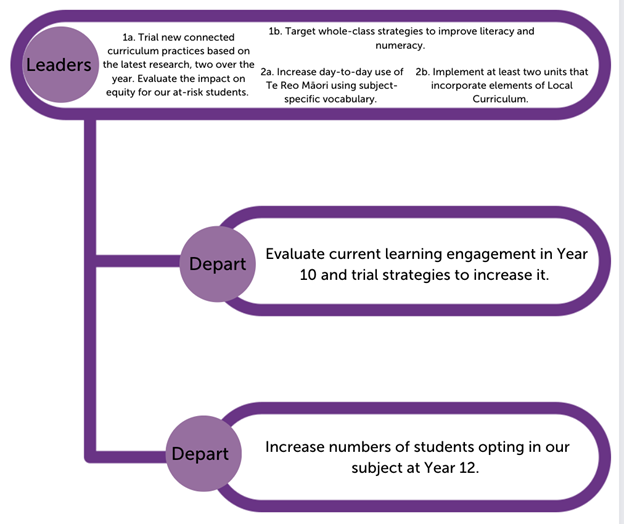
- The Department discusses the goals and then identifies which can be incorporated under one wider arching goal that aligns with where they want to take the department.
- These goals then get broken down into sub-goals across the department for accountability.
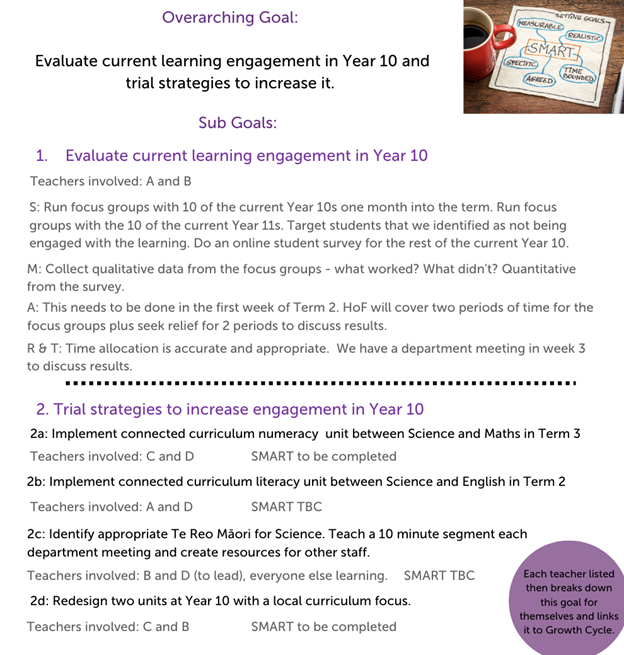
Dimensions – word smithing your goal
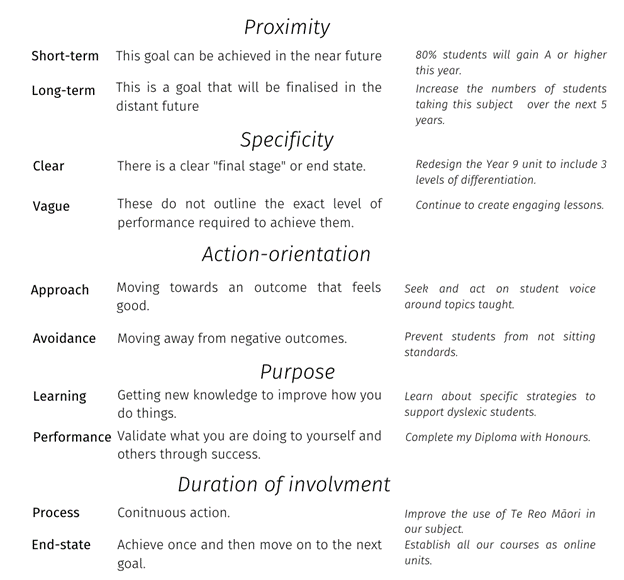
The Pros and Cons of each goal dimension
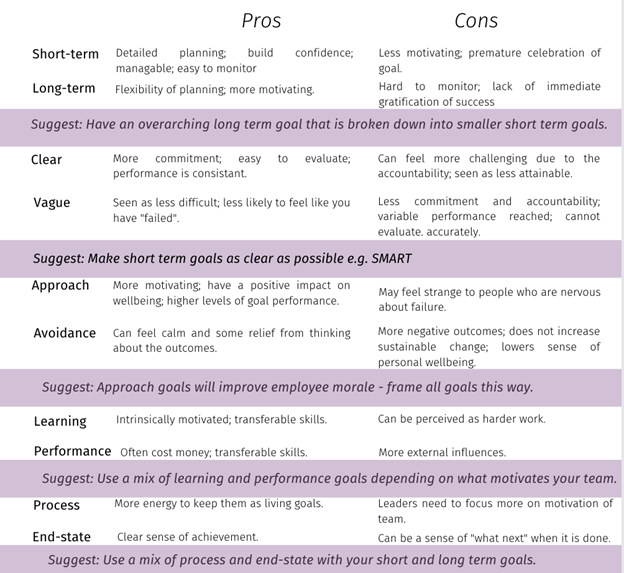
“Goals have a pervasive influence on both employee behaviours and performance in organizations and management practice” (Locke & Latham, 2002)
Want to know if you have set actionable goals? Try using Alicia McKay’s table as a checklist – I would also recommend reading both her books that are available from her site.
Shelvable strategy
- Plausible
- Captures everything relevant
- Keeps people happy
- Long wish-lists
- No specific responsibility
- Funded ‘within existing resources’
- Reporting on inputs and outputs
- Vague benefits
- On top of the existing work programme
- Creates more work
- Evaluated annually
Actionable Strategy
- Meaningful
- Captures critical priorities
- Makes some people unhappy
- Short action lists
- Clear accountability and ownership
- Dedicated implementation resources
- Reporting on outcomes and impacts
- Identifiable impacts
- replaces less critical intiatives
- Inspires action
- Monitored regularly
McKay. A. (2019). From Strategy to Action
